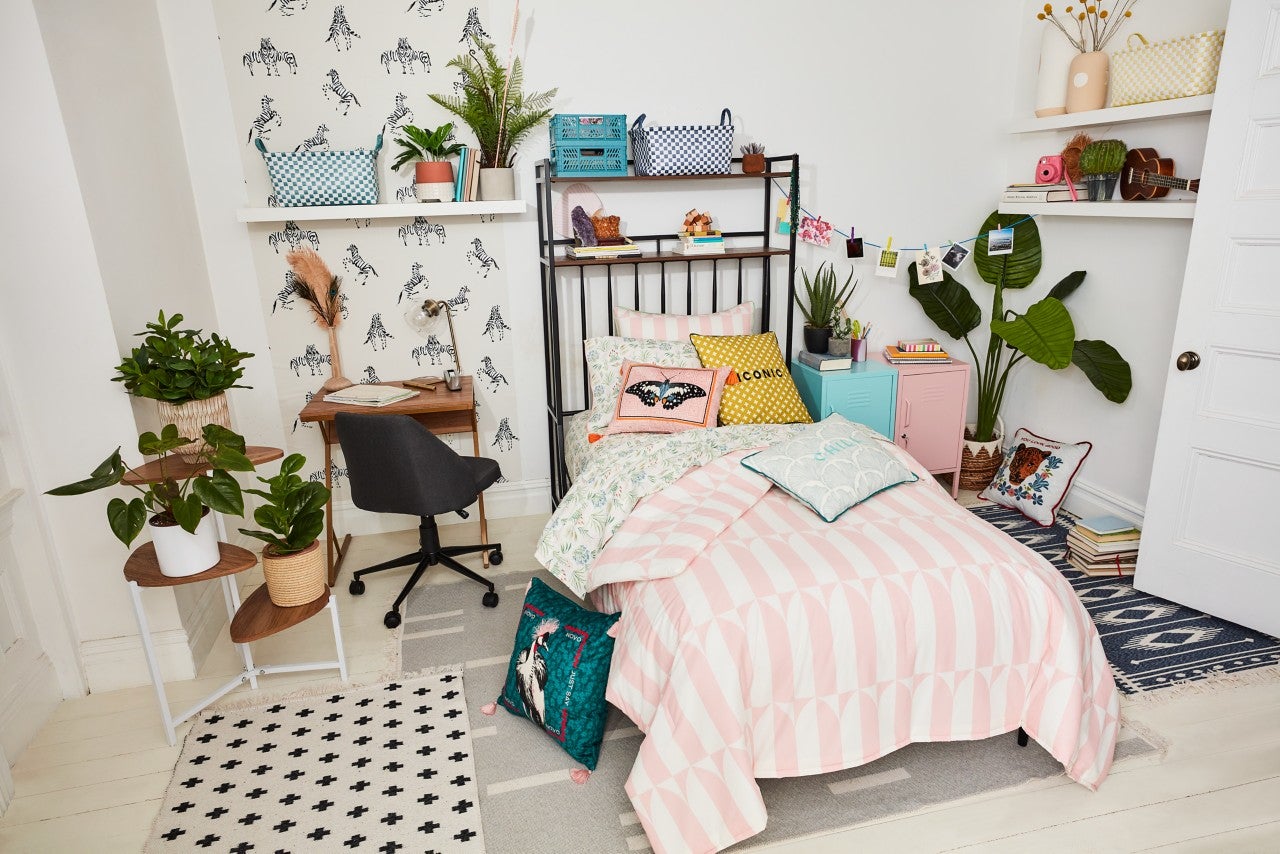One of the few things that Bed Bath & Beyond continued to do well long after the majority of its merchandising strategy had descended into chaos was its back-to-dorm business.
While hard market share numbers are hard to come by, those in the trade generally concur that the big-box chain is probably the largest player in the business of furnishing college dormitories with sheets, towels, storage containers, small appliances and other assorted campus paraphernalia.
The market for college student furnishings was estimated to be $10.5 billion in 2022, according to Statista. Obviously, a highly seasonal business with a very tight selling period, it was also highly lucrative for retailers that knew how to manage the buying, inventory and marketing required to be successful.
Other retailers like Target, Kohl’s andWalmart, and more recently Amazon, have also been significant sellers, but Bed Bath & Beyond has long seemed to be the first choice for college students and their credit-card-carrying parents. It’s a role the brand has dominated since the 2008 demise of its archrival, Linens N’ Things, which also excelled in the space.
Now, with Bed Bath & Beyond’s ongoing deconstruction and possible impending bankruptcy filing or liquidation, other retailers are eyeing the business, vendors say, with a few expressing (off the record) surprise that more aren’t going after the college furnishings business.
The company’s diminished role in the back-to-dorm sector—by this fall, the brand will have as few as 360 stores, down from 1,000 locations just a few years ago—reflects the overall shifting of market share in the home furnishings space. A new study by Bank of America shows that Amazon, Wayfair and Target gained the most market share in home furnishings products since 2019, each gaining 1 percent, while Bed Bath & Beyond declined 4 percent. It’s likely the back-to-dorm subset would show similar gains and losses (although not specified in the new survey). For the rest of the year, the bank’s research showed retailers like Costco, Macy’s and Arhaus gaining share in the home furnishings space, though we’ve yet to see how this will play out in the college market.
One of Bed Bath & Beyond’s business strengths was its “buy-here, ship-there” service allowing college-bound students to go to their local store, make their purchases and then pick up the order at the store near their college. Its previous scale allowed the company to provide this service without additional shipping and storage costs, but with only a third as many stores this year, it will presumably lose some of that business to the likes of Target (with almost 2,000 stores nationwide) and Amazon Prime (with free one-day shipping that doesn’t require even a stop at the store).
But it wasn’t just logistics that helped the company get business. It also offered specific products geared for the college student, including twin XL bedding, a size really only used in dormitories. Often featuring solid colors, rather than fashion prints, the retailer could pack-and-hold any unsold inventory until the following year knowing it would be just as saleable then. In addition, it worked with its suppliers to develop specific products for this marketplace, be it oversized multiple pillow packs, tableware-in-a-box sets and the ubiquitous shower-caddy storage module—the latter becoming a source of competition for color, functionality and price back in the day when it competed against Linens N’ Things.
Bed Bath & Beyond would also supply school-specific shopping lists for local colleges and universities that might include information on bed sizes, room configurations and which products were supplied by the school. The lists probably differed little from school to school, but by localizing the assortment, the company made a connection with shoppers.
By the end of March, most retailers will no doubt be pretty locked into their back-to-dorm and back-to-school merchandising plans, and it may not be until the 2024 season that we see other retailers make concerted efforts to go after this business. With as much as $10 billion in potential business in play, it’s surprising that we aren’t seeing more retailers going after this market more aggressively.
Right now, you’d have to give American retailers a B- on this course so far.
Homepage image: A dorm-focused collection from The Novogratz for Bed Bath & Beyond | Courtesy of The Novogratz
____________
Warren Shoulberg is the former editor in chief for several leading B2B publications. He has been a guest lecturer at the Columbia University Graduate School of Business; received honors from the International Furnishings and Design Association and the Fashion Institute of Technology; and been cited by The Wall Street Journal, The New York Times, The Washington Post, CNN and other media as a leading industry expert. His Retail Watch columns offer deep industry insights on major markets and product categories.




























